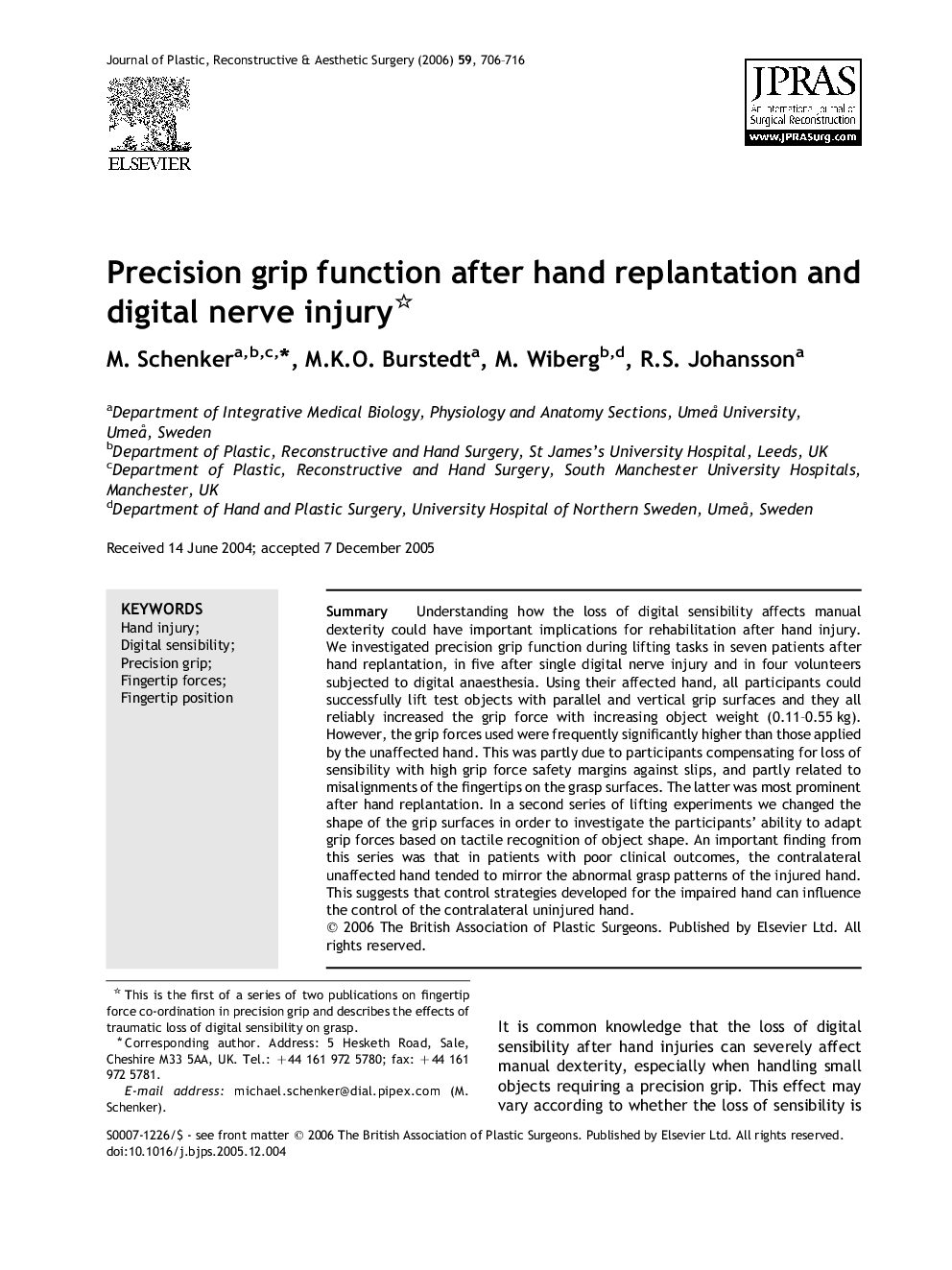| Article ID | Journal | Published Year | Pages | File Type |
|---|---|---|---|---|
| 4121775 | Journal of Plastic, Reconstructive & Aesthetic Surgery | 2006 | 11 Pages |
SummaryUnderstanding how the loss of digital sensibility affects manual dexterity could have important implications for rehabilitation after hand injury. We investigated precision grip function during lifting tasks in seven patients after hand replantation, in five after single digital nerve injury and in four volunteers subjected to digital anaesthesia. Using their affected hand, all participants could successfully lift test objects with parallel and vertical grip surfaces and they all reliably increased the grip force with increasing object weight (0.11–0.55 kg). However, the grip forces used were frequently significantly higher than those applied by the unaffected hand. This was partly due to participants compensating for loss of sensibility with high grip force safety margins against slips, and partly related to misalignments of the fingertips on the grasp surfaces. The latter was most prominent after hand replantation. In a second series of lifting experiments we changed the shape of the grip surfaces in order to investigate the participants' ability to adapt grip forces based on tactile recognition of object shape. An important finding from this series was that in patients with poor clinical outcomes, the contralateral unaffected hand tended to mirror the abnormal grasp patterns of the injured hand. This suggests that control strategies developed for the impaired hand can influence the control of the contralateral uninjured hand.
